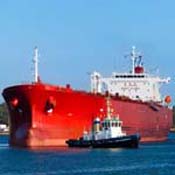
AIS standards stemmed from the need to make busy waterways safer. The International Maritime Organisation (IMO) recognised this, and created carriage requirements for AIS, these stipulate vessels of a certain size and type have to carry AIS devices.
Once the carriage requirements had been agreed, the International Association of Marine Aids to Navigation and Lighthouse Authorities (IALA) and the International Telecommunications Union (ITU) create the standards that all AIS devices are measured against. Drawing on many years experience of the marine and communications sectors, this is where it is decided how AIS will work.
Once those standards have been decided, the International Electrotechnical Commission (IEC) create test standards which the devices are measured against. These standards are regulated by the individual countries, members of the IMO, who create their own approval awards. For more information on the approval awards, visit the Approvals and certification page.
Only AIS devices that are used on SOLAS vessels - Class A transceivers and SARTs - are regulated by the IMO. All other AIS devices are regulated on a nation by nation basis. For more information, visit the national approval authorities page.
For more information on the AIS standards and testing and certification procedure, visit the Standards section.









 Anti Collision
Anti Collision Security
Security Efficiency
Efficiency Fun
Fun Communications
Communications Information
Information Safety
Safety